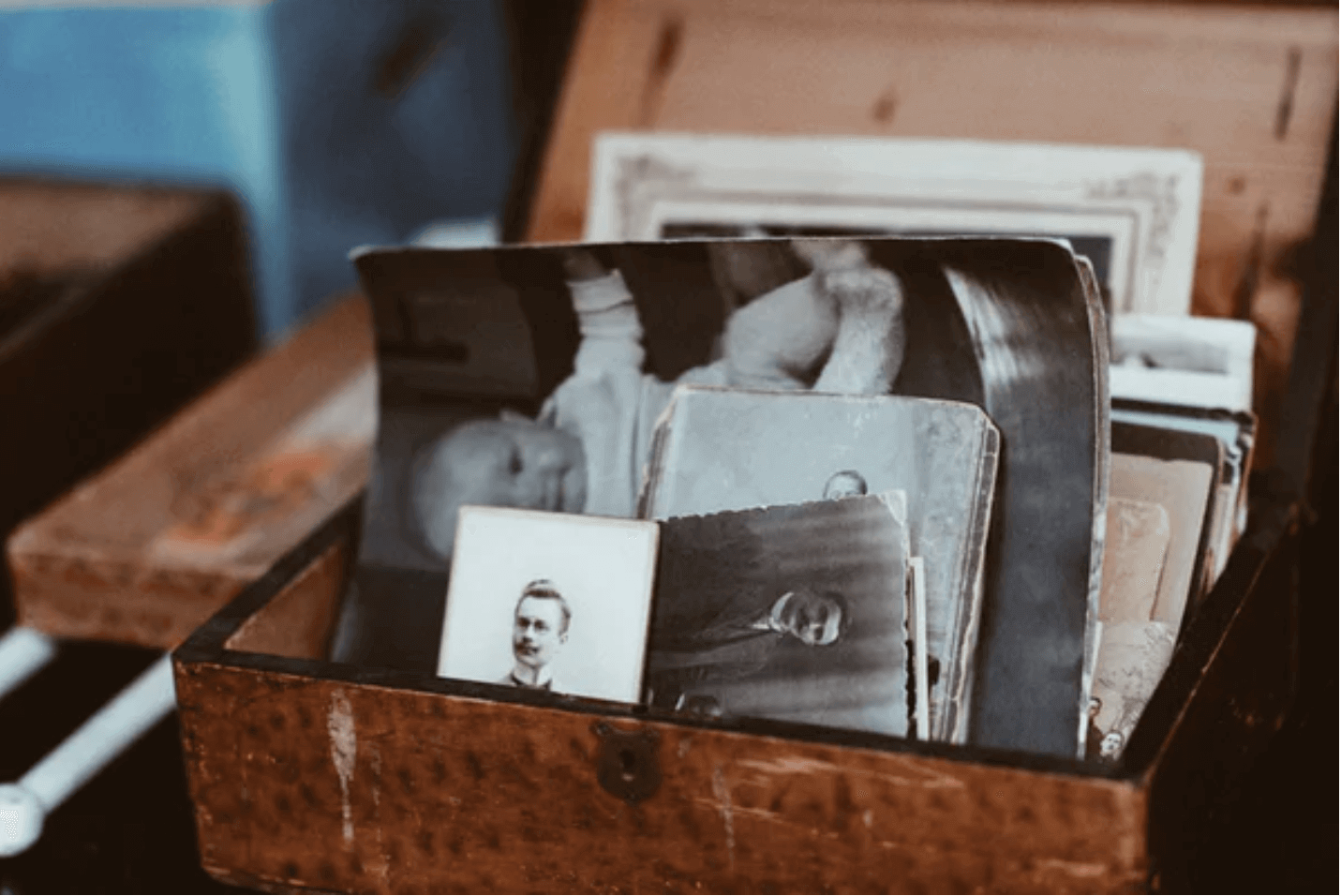How do you get started with Swedish Death Cleaning?
Scandinavian concepts have been growing in popularity following the surge of “hygge,” which is a Danish word describing a mood of cosiness and contentment.
We admit the newest trend, Swedish Death Cleaning, sounds a lot less pleasant, but this method of organisation can equally enhance your quality of life.
In this guide, we will walk you through the process, step-by-step, offering expert insight on how to declutter your home and adopt a minimalist mindset.
Continue reading our guide for tips on how to simplify your life, and rid your home of a lifetime of clutter.
Chapter 1: What is Swedish Death Cleaning?
You are probably familiar with Marie Kondo’s cleaning technique, but what about the newest sensation, Swedish Death Cleaning?
Swedish Death Cleaning is a decluttering and organisation method stemming from the Swedish words dö meaning “death,” and städning meaning “cleaning.”
Although döstädning is a long-standing practice in Sweden, it has recently gained worldwide popularity due to the New York Times bestseller, “The Gentle Art of Swedish Death Cleaning.”
Written after the traumatic losses of her mother and husband, Swedish artist, Margareta Magnusson, sheds light on how to declutter your home with the intent of making the grieving process easier for your friends and family after you are gone.
After dealing with the deaths in her own life, Magnusson realized the impact that a cluttered home can leave on those who survive you.
She made it her mission to ensure that her loved ones will not be burdened with sorting through every item she accumulated throughout her life.
While similar to the Konmari method of only keeping items that “spark joy,” Swedish Death Cleaning takes this one step further and suggests also analysing how your belongings will make others feel.
Simply put, which items will be of any value to others after you die?
Death is a natural part of life that cannot be avoided. Magnusson says, “The only thing we know for sure is that one day we will die.”
And while nothing can ease the pain of losing a loved one, Swedish Death Cleaning is designed with survivors in mind.
It is about doing what you can while you are still here to assist your friends and family when you are not.
Despite the name, you can practise this cleaning strategy no matter your age.
For young people, think of it as a way of tidying up your apartment in anticipation of a future move.
The design concept, “Scandinavian minimalism,” is growing in popularity.
By participating in Swedish Death Cleaning, you can be one step closer to achieving this streamlined aesthetic.
Now that you know the ideology behind Swedish Death Cleaning, you are ready to put this method into practice!
We have put together this guide to assist you along the way. To find out your next step, continue reading below!
Chapter 2: Swedish Death Cleaning Steps
Before you begin the process of Swedish Death Cleaning, it is important to be in the appropriate frame of mind.
For some, the morbid nature of the name itself can be off-putting, but Margaret Magnusson assures readers that the process does not have to be bleak.
“Life will become more pleasant and comfortable if we get rid of some of the abundance,” she writes.
The intent behind this strategy is to make you and your loved ones’ lives easier. Embark on this decluttering journey with a selfless and loving heart.
Step 1:
Once you have evaluated your intent and mindset you are ready to begin the process.
If you are truly participating in the art of döstädning, reach out to your closest friends and family and gently inform them of what you are doing.
Approach them with compassion and patience, as death and bereavement are sensitive topics.
Assure your loved ones that you are simply decluttering your home. It can help to explain the philosophy behind this method.
Once your friends and family are comfortable with the idea, discuss with them which belongings of yours they would be interested in preserving.
Encourage them to speak candidly. Affirm that your feelings will not be hurt if they do not want an item of yours.
This cleaning strategy is about decreasing their stress. You are trying to ensure that they are able to grieve in the most peaceful way possible.

Photo by Erda Estremera on Unsplash
Step 2:
Organising a lifetime of clutter can seem intimidating, but it doesn’t have to be.
Magnusson strongly suggests saving items with high sentimental value for last.
If you begin with photos and love letters, it can be easy to procrastinate, reminisce, and lose focus. Put these aside for later.
Start the cleanse with items that you cannot see. This includes belongings that are stored in attics, closets, and drawers.
Material items that are not visible on a day-to-day basis are generally of little sentimental value and easy to get rid of.
Next, move on to bigger items such as furniture, collectibles, and books.
Donate or sell everything that your friends and family members do not want.

Photo by chuttersnap on Unsplash
Step 3:
After sorting through larger possessions, begin organising your closets, clothes, and shoes.
This is the time to finally get rid of all the things you have been holding on to “just in case.” If you have not worn it within the last year, donate or sell it.
If a certain clothing item has sentimental value to you, ask a loved one if it is something they would like to keep. If their answer is no, donate or sell it.
Donating clothes and other possessions can make saying goodbye to treasured items more pleasant. Take comfort knowing that your favorite dress will “spark joy” for its new owner.
Neatly organise your remaining clothes. For items of significant value, leave instructions for whoever will clear out your home when you are gone.

Photo by Roman Kraft on Unsplash
Step 4:
The last step of Swedish Death Cleaning is sorting through highly sentimental items such as photographs, heirlooms, and handwritten letters.
Magnusson recommends saving these items for last as they can be the most difficult to purge.
The good news is, you do not have to part with possessions that are deeply meaningful.
Discuss with loved ones which items they would like to keep, and create a box for the rest.
This box will contain those belongings that you have a special bond with but are insignificant to others.
When you pass, leave instructions for family members stating what should be done with the box. Explain that this box can go unopened and simply be thrown away when you are gone.

Photo by Glenn Carstens-Peters on Unsplash
You now know the steps to take to begin your Swedish Death Cleaning journey.
Here at STORED, we do not want you to feel overwhelmed by this process.
In case you are still feeling uneasy about parting with cherished belongings, read our additional tips below.
Chapter 3: Swedish Death Cleaning Tips
Tip 1: Give things as gifts
Margareta Magnusson says that while Swedish Death Cleaning was primarily intended for people nearing the end of their life, it is helpful to begin the process early.
You do not have to be approaching life’s end to obtain a minimalist’s mindset.
We accumulate so much stuff over the years, and since it takes some time to sift through all of your possessions, you can begin the cleaning process early by periodically gifting items to your family and friends.
This is not to suggest forgoing a nice Christmas or birthday present altogether, however.
Presenting a personal belonging as a gift should be done thoughtfully, and not used as a way to get rid of junk.
Reflect on past conversations. Was your sister-in-law enamored with that painting on your wall or a necklace you were wearing?
This is an opportunity to spread joy to a loved one while minimising your possessions.
Tip 2: Consider your digital footprint
In these modern times, a large portion of our lives exists in the digital world.
When you pass, your digital footprint will remain unless it’s taken care of by a loved one.
Do you want your accounts deleted? Do you have online services to unsubscribe to?
Make a list of all accounts and passwords. Include instructions on what should be done with your social media accounts upon your passing.
Tip 3: Don’t obsess over the “death” aspect
While the name sounds bleak, death cleaning does not have to be completely centered around your passing, and it is more than just quickly dusting and mopping your home.
Think of it as a lifestyle change. A new approach to home organisation.
In Magnusson’s book, she writes, “Mess is an unnecessary source of irritation.”
So, do not get hung up on the morbid nature of the name.
View this method as a way to simplify your life and organise your belongings.
The result will not only improve your quality of life, but it will also ensure that your loved ones are allowed to grieve without the burden of sorting through mountains of your possessions.
Tip 4: Dispose of potentially embarrassing possessions
We all have our secrets and vices. Death does not mean these secrets must be exposed.
Take into consideration what will happen with things that you keep private, and think of who will be clearing your home after you pass.
Fundamentally, Swedish Death Cleaning is an act of kindness.
Spare your loved ones from any discomfort or embarrassment they might feel if they stumbled upon such items.

Photo by James Hose Jr on Unsplash
Tip 5: Reward yourself upon completion
After successfully clearing your home of all excess items, reward yourself for your hard work!
Take a trip to the beach, or see a movie with friends.
Plan an uplifting activity that allows you to see the beauty in life (without accumulating more material items)!
Tip 6: Start storing now with Stored
Maybe your daughter would like to keep your desk that belonged to your grandparents, but she does not currently have room in her apartment.
Then renting a storage unit might be the best choice.
Our storage facilities offer a safe place to keep excess belongings, minimising the clutter in your home.
You can find more about our personal storage services and reach out if you have any further questions.
Chapter 4: Final Thoughts
While initially, it might feel morbid to prepare for your own death, Swedish Death Cleaning is not intended to be a depressing or daunting mission.
In her book, which can be purchased on Amazon, Margareta Magnusson approaches the topic in a delightful, light-hearted way.
She enlightens readers on how they can still be of service to family members even after they’re gone.
It is burdening enough to sort through piles and piles of your own stuff, now imagine sorting through someone else’s.
Swedish Death Cleaning is an invaluable gift you can give your loved ones that simplifies their life, as well as yours.
Now Back to You
You now know what Swedish Death Cleaning is and what are the steps you should follow when using it to declutter your life.
Now we’d like to hear from you.
Have you been given the task of cleaning out a loved one’s home? Which of these steps would have most eased the process? Will you apply the art of Swedish Death Cleaning to your life?
Let us know in the comments below!
Some additional resources you might find useful:



